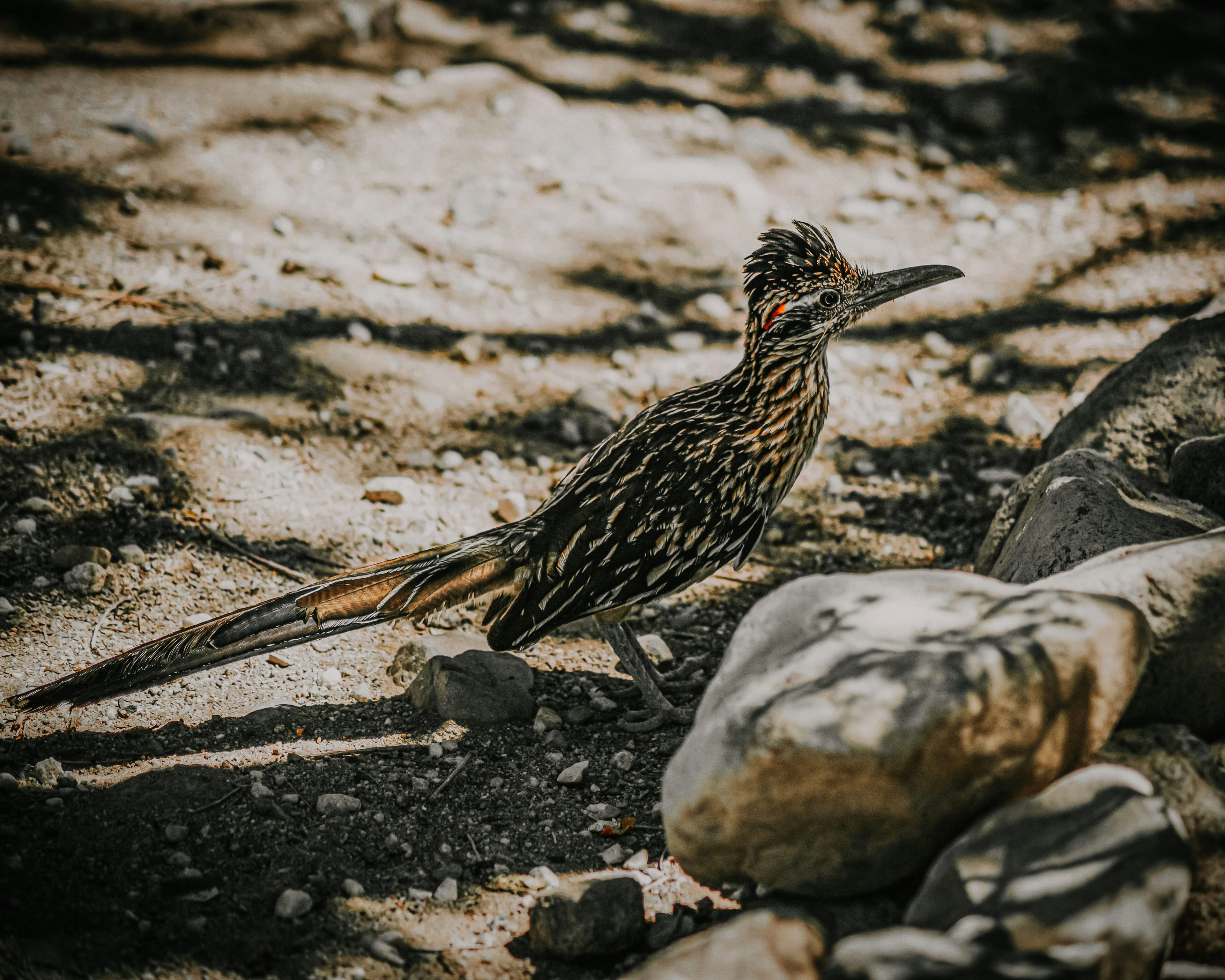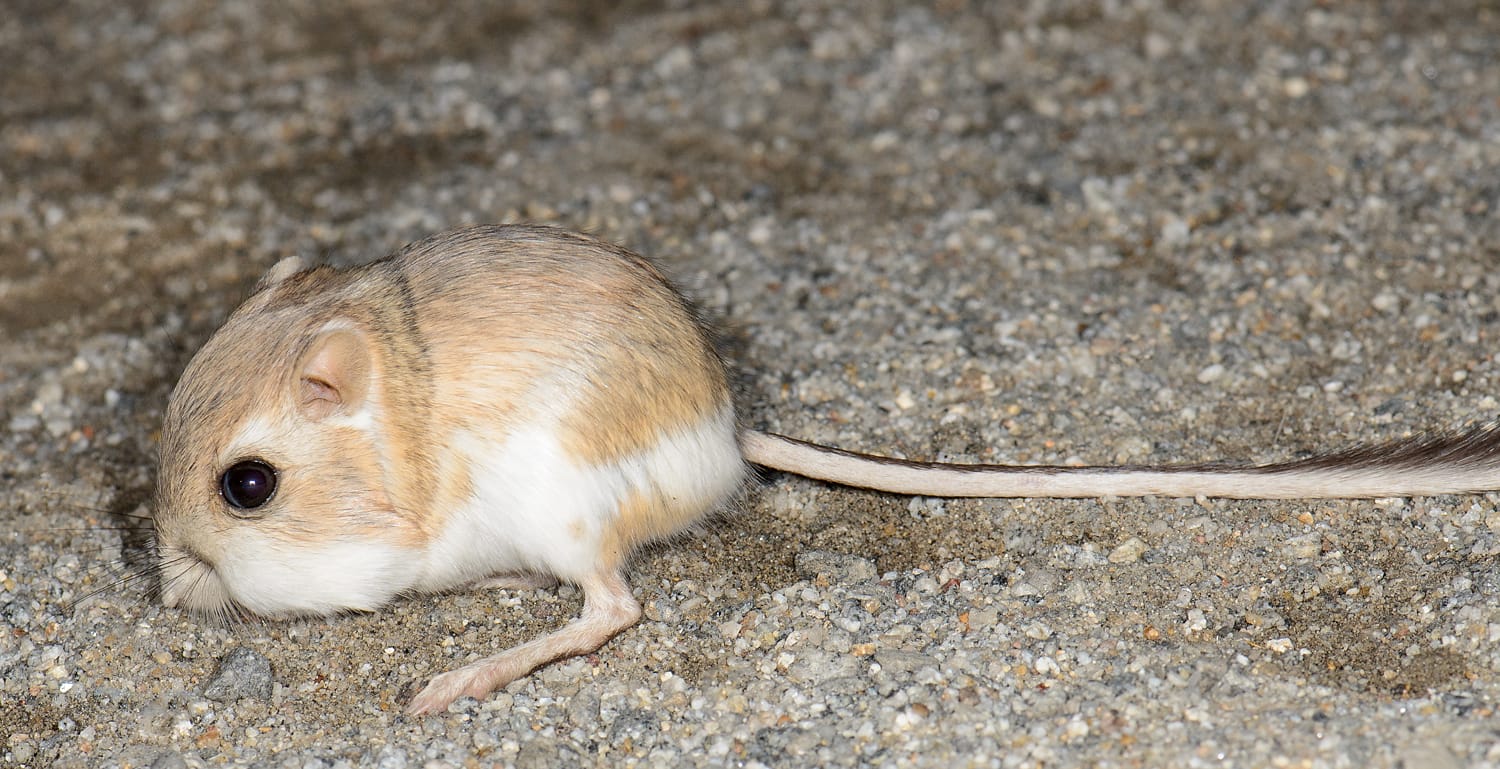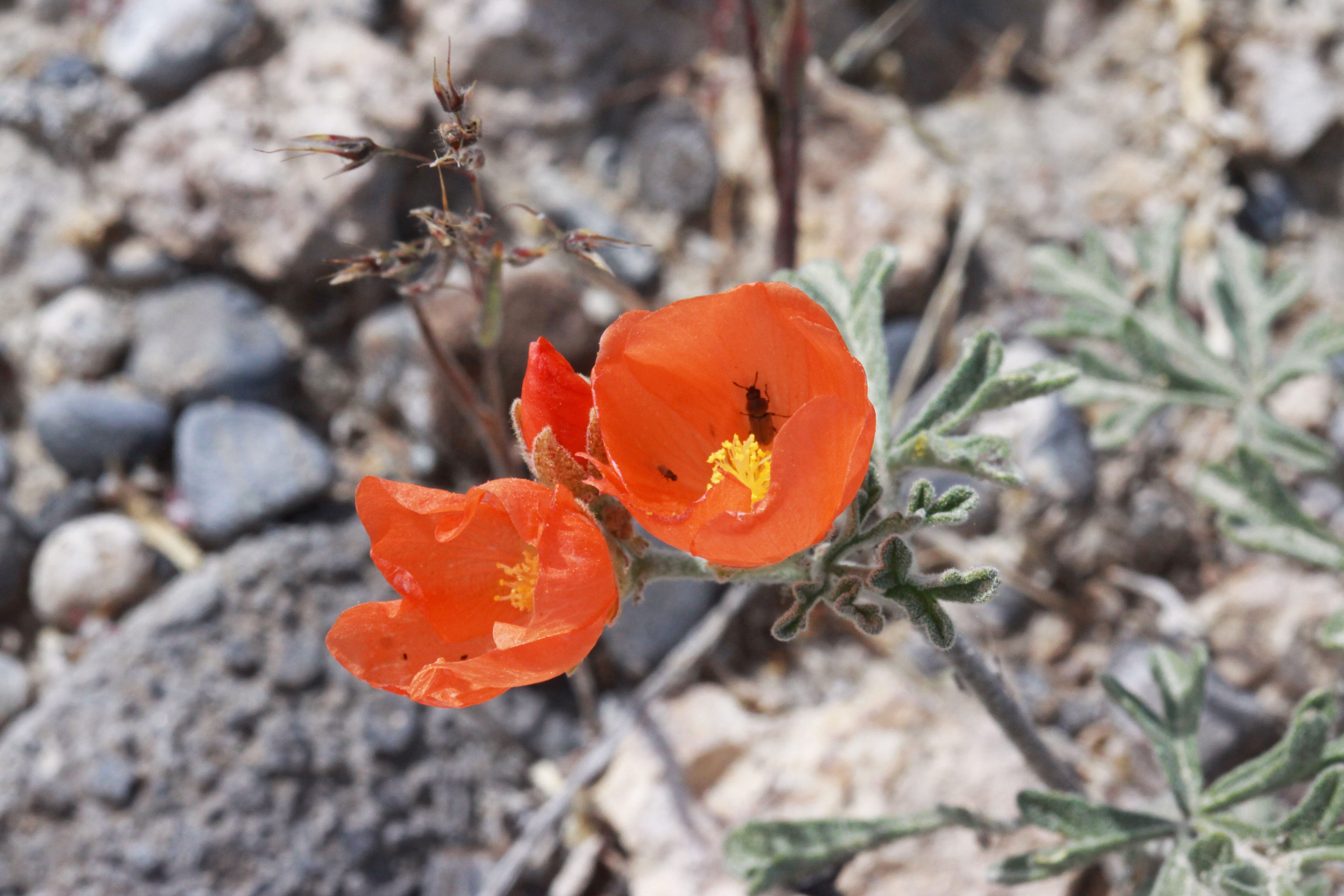Behold the Coolest Plants & Animals of the American Desert

Big Horn Sheep | Alyssa Teboda
What does it take to live out there?
The desert is many things—a landscape, a destination, a state of mind. But above all, it is a habitat, deceptively rich and diverse. A true desert-lover knows her flora and fauna—start here.
FAUNA
BIGHORN SHEEP

Desert Southwest
Hot springs and trading posts, astronomers and desert naturalists, Navajo traditions and Route 66 charm.
These iconic ruminants can go weeks without water while scampering up rocky terrain gripped by concave hoofs. Older rams sport the large curved horns.

GREATER ROADRUNNER
This fierce member of cuckoo family prefers running to flying after prey–rattlesnakes, scorpions, bats. Intense rivalry with Coyote is merely a rumor.

GILA MONSTER
Noted for peachy-pink and brown markings (and up to two feet long), Nevada’s only venomous lizards spend a lot of time underground.

JAVALINA
Despite their pig-like snouts, javelina are only distantly related to boars and hogs. These hoofed mammals are smaller and trimmer than pigs too: up to 2 feet tall, usually weighing 60 pounds or less. Javelina have long tusks and coarse dark fur, with a lighter band around their necks from which they get their other offcial name: the collared peccary. Their less offcial names–musk hog, skunk pig–derive from the pungent scent they release to mark their territory and ward off threats. Around Big Bend National Park, javelina travel in herds, known as “squadrons,” of about 15. Though they’ll eat small rodents or lizards at times, they subsist mostly on vegetation. In fact, succulents provide much of the javelina’s water intake–part of what makes these musk hogs so well suited to the desert. They regularly chow down on prickly pear cactus, which may not seem like the most inviting foodsource. According to one naturalist, a javelina shredding prickly pear with its sharp teeth “sounds like a rock-crusher.”

WESTERN DIAMONDBACK RATTLESNAKE
The heavy-weight among the diverse rattlesnake community, responsible for more fatalities than any other snake in the U.S. Named for the distinctive markings along its back. Found mostly below 4,500 feet. Can grow up to 7 feet in length.

MOJAVE DESERT TORTOISE
Southwest nature writers have long been captivated by the Mojave’s most-wrinkled resident. Terry Tempest Williams called the Mojave desert tortoisea “tank with a tail dragging in the sand,” while Ellen Meloy once referred to the creature as an “eight-pound clock,” noting its acute sense of time. Tortoises spend nearly 95 percent of the year burrowing underground, hibernating in winter and estivating (warm-weather dormancy) in summer to avoid triple-digit heat. Come spring and fall after rainstorms, tortoises emerge from their deep burrows to feast on wildflowers, grasses and other annuals with their sharp beaks. While they’re out, they use the shade of plants like creosote as they search for water, sometimes even digging their own cache to drink from during downpours.

KANGAROO RAT
Despite their name, these critters are neither kangaroo nor rat. They’re most closely related to the gopher. Kangaroo rats are diminutive, weighing less than 5 ounces, with endearingly huge eyes, stout little bodies, long tails, and strong hind legs that can send them springing up to 9 feet when they need to escape a predator. These desert experts never have to drink water; amazingly, they’re able to metabolize enough to survive from the seeds they eat.

COYOTE
Coyotes have an incredible ability to adapt to a wide range of habitats.They’re opportunists, omnivores in the broadest sense, feeding on whatever’s available and adjusting their hunting style as needed. Everything’s fair game, from fruit and nuts to birds, reptiles and rodents. These hardy dog-cousins go about their business even in cities, so it’s no wonder they’re unfazed by the desert.

BLACK-TAILED JACKRABBIT
Technically hares, not rabbits, black-tailed jackrabbits have huge ears for a reason: they help keep the animals cool by letting more heat escape their bodies. In Joshua Tree, jackrabbits subsist mostly on desert scrub, with creosote and mesquite making up much of their diet. In a pinch, they can sprint up to 40 miles per hour. Like coyotes, their neutral coloring allows them to blend into the desert landscape.

CACTUS WREN
Year-round desert resident and fearless forager. Sounds like an old car that just won’t start no matter how many times you turn the key.

FLORA
JOSHUA TREE
Impossible to miss, these wild-armed and awesome yuccas–not actually trees at all–dominate the valleys of their namesake national park and can be found elsewhere in the great Southwest, always providing a visionary moment for desert lovers. The plant is said to have been named by Mormon settlers, who likened it to Moses’ successor, Joshua, reaching upward in supplication, but it has been known by many other names among the Southern Paiute, Cahuilla and Western Shoshone, among other peoples. The Cahuilla made baskets and sandals with its leaves and ate its white-green flowers and disc-like seeds. Numerous species rely on the tall, spiky yucca, including the Scott’s oriole, which nests in its crooks, and the yucca moth, which the Joshua tree in turn relies upon for pollination. There are two recognized species of Joshua tree, the eastern and western (debate as to whether they are truly separate or just subspecies continues). The western species–Yucca brevifolia, the one found in Joshua Tree National Park–is currently listed as endangered under the California Endangered Species Act. A 2019 study projected that by the end of the century, Joshua trees would be nearly extinct from the park due to rising temperatures and other factors fueled by climate change. Models showed that if carbon emissions decrease, the Joshua trees will have a better chance of survival.

SMOKETREE
With its crooked array of spinygray branches, this shrub has a haunting “smoky” appearance from a distance. Common across the Colorado Desert, as well as elsewhere in the Sonoran Desert.
BRITTLEBUSH
Hardy woody shrub with brilliant yellow flowers. Extremely well-adapted to harsh desert conditions; in drier times, it grows smaller leaves (for water retention) with minuscule white hairs (which help with sun protection).

CREOSOTE BUSH
Grows in a roundish shape up to10 feet tall, with tiny, waxy olive-green leaves. Fluffy white tufts that appear after rains (alongside yellow flowers) are seed pods. Wide spread across American deserts. Also called greasewood.

TEDDY BEAR CHOLLA
Named for their charmingly fuzzy golden appendages. But don’t be deceived–they’ll spear you if you get too close.

BEAVERTAIL PRICKLY PEAR
Smallish cactus named for its broad, flat pads, which usually don’t have spines. But beware their bristles, a.k.a. glochids. Flowers are bright pink.

LECHUGILLA
Like the Joshua Tree in the Mojave, Agave lechuguilla is an indicator species: if you see one, you are in the Chihuahuan Desert–it’s found nowhere else. Twenty or more blue-green leaves grow in a rosette, up to 2 feet high. Lechuguilla is Spanish for “small lettuce,” and the plant is also known as “shin dagger” for the way its sharp-tipped leaves aggrieved early explorers. Indigenous peoples have long used its fibers for rope, baskets and clothing. Bitter saponins in the roots can be used to make soap. As you might expect in an agave found all across the Chihuahuan Desert, lechuguilla has many adaptations that help it survive in arid landscapes, like its succulent leaves that store water, and its roots that grow rapidly during rain to absorb as much as possible. Because it grows clonally, lechuguilla often appears in large patches. Like the century plant, lechuguilla blooms just one time once it reaches maturity, after 10 years or more: yellow-green flowers growin a robust cluster atop a stalk that shoots up quickly (up to 8 inches ina single day!), reaching 3 to 10 feet tall. Call it an ecstatic last act: after saving up all its nutrients for the big bloom, the plant dies.

MEXICAN PIÑON PINE
A fire-resistant survivor with brushy blue-green foliage. Gnarled specimens, centuries old, pose along the South Rim in Big Bend National Park in Texas. The nuts are food for Mexican jays, kangaroo rats and humans too.

DESERT PHLOX
A common spring sight, on trail and in grassland: five petals of a most delicate pale purple.

GLOBEMALLOW
Shrubby, orange-flowering hallmark above rim and below. Nourishing to beast and bee.

SACRED DATURA
Poisonous night-bloomer, aka angel’s trumpet. Traditional curative, known to induce visions.



